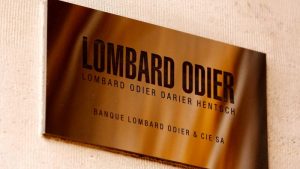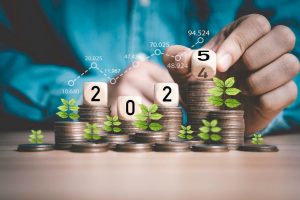The Rales brothers, Steven M. Rales and Mitchell P. Rales, are renowned American businessmen and investors who have left an indelible mark on the corporate landscape, primarily through their association with Danaher
DHR
The Rales brothers are celebrated for their disciplined and strategic approach to business. They have consistently sought out industrial and technology companies with substantial growth potential, instilling principles of lean manufacturing and continuous improvement inspired by the Japanese concept of Kaizen. Their influence led Danaher to diversify into various sectors, including healthcare, life sciences, diagnostics, and environmental solutions.
In 2015, they made a significant strategic move by splitting Danaher into two separate entities: Danaher Corporation, focusing on science and technology, and Fortive
FTV
Beyond their business acumen, the Rales brothers are known for their philanthropic endeavors, supporting various causes, including the arts and education. Their wealth and business achievements have consistently earned them a place on Forbes’ list of the wealthiest Americans. In essence, the Rales brothers’ legacy lies in their ability to steer companies towards success, their commitment to philanthropy, and their enduring impact on the corporate world.
In the annals of business and finance, the Rales brothers emerged as figures of profound success, and yet, they were known for their propensity for discretion. Their narrative, a tale of exceptional accomplishment, was enshrouded in an aura of secrecy, a facet that perpetually piqued the curiosity of those seeking insights into their methodologies and motivations.
These two brothers, renowned for orchestrating transformative changes, had undertaken the stewardship of Danaher Corporation, a struggling conglomerate, and masterminded its evolution into a global industrial juggernaut. However, amid their substantial influence and wealth, the Rales brothers remained conspicuously private individuals.
Though their footprint could be discerned within the realm of commerce, details pertaining to their personal lives remained elusive. It was postulated that their unassuming demeanor mirrored their modus operandi in business: unobtrusive, methodical, and concentrated. Whereas many individuals occupying their stature often gravitated toward the limelight, the Rales brothers opted to let their actions and outcomes resound more emphatically than their verbal pronouncements.
The veil of secrecy enveloping them lent an air of intrigue to their narrative. Some conjectured that their predilection for discretion was a tactical maneuver, affording them the freedom to operate behind the scenes, unburdened by the scrutiny that typically accompanies individuals of high-profile status. Others perceived it as a manifestation of their reverence for the craft of business itself, wherein outcomes trumped ostentation.
Ultimately, the chronicle of the Rales brothers underscored the notion that triumph could be attained with quietude, away from the public gaze. Their proclivity for secrecy heightened the allure of their journey, leaving those who endeavored to decipher their enigma with a sense of wonderment and fascination. Thus, the enigmatic legacy of the Rales brothers persisted in its capacity to captivate the imagination of the business domain.
The Kaizen Philosophy
Danaher Corporation designs, manufactures, and markets medical, industrial, and commercial products and services from its headquarters in Washington, D.C. It has historically attempted to keep a minimal public profile and has grown primarily through acquisitions. Danaher was one of the first companies to implement the Kaizen philosophy. Kaizen principles to manufacturing, which is a lean manufacturing Japanese philosophy of continuous improvement and elimination of waste.
Kaizen, a Japanese term for “continuous improvement,” is a management philosophy and practice focused on making incremental, small-scale enhancements to processes, products, and systems to achieve continuous and sustainable progress. Originating in Japan after World War II, it emphasizes the idea that even modest changes can lead to substantial improvements over time. Key principles of Kaizen include waste elimination, standardization, employee involvement, and the pursuit of continuous, manageable improvements.
Kaizen events, or “blitzes,” are often used to drive quick results by mobilizing cross-functional teams to address specific issues or process improvements. The Plan-Do-Check-Act (PDCA) cycle is a fundamental concept, guiding organizations to plan changes, implement them, check results, and act to make further refinements based on feedback.
The benefits of Kaizen include improved efficiency, enhanced quality, cost reduction, and increased employee engagement. While it originated in manufacturing, Kaizen has been successfully applied in diverse sectors such as healthcare, software development, and services. Kaizen’s long-term commitment to continuous improvement and its global influence make it a cornerstone of modern management practices, contributing to better processes, products, and outcomes in organizations worldwide.
Spinoffs As A Key Value Creator
Value creation though Spinoff is a strategic corporate action that involves separating a subsidiary or division from a parent company, resulting in two distinct, independently traded entities. Completely in line with the brothers’ vision of continuous improvement in their businesses, focusing on core competencies and improved operational efficiency. They have been active.
The Latest Spinoff
DHR is set to transform into a pure healthcare player consisting of its diagnostics, life science, and biotechnology businesses. The Spinoff of the Environmental & Applied Solutions (EAS) division (Veralto) will pave the way for DHR to become a fully integrated vertical healthcare chain provider. Although recent guidance from management indicates a subdued outlook for FY23 due to macroeconomic challenges, inventory adjustments, and cautious demand, it is anticipated that pent-up demand will alleviate these issues and gain momentum starting in Q1 FY24. Meanwhile, its modest leverage of ~1.1x and strong cash flow allow it to grow inorganically by strategically deploying its capital, thereby strengthening its product offering, as evident from its recent acquisition announcement of Abcam for $5.7bn.
The Key To Following The Rales Brothers
The Rales Brothers’ Holdings: Currently, Steven Rales is the Chairman at DHR and previously occupied the director position at Enovis Corp. (ENOV, formerly Colfax) while Mitchell Rales holds a non-executive Chairman position at ENOV and Chairman at ESAB Corp. (ESAB, Spinoff from ENOV). He is also on the board of DHR. Steven Rales owns shares in DHR (a 4.86% stake), representing 95.07% of his portfolio holding, owns shares in ENOV (a 4.87% stake), representing 1.68%, and owns shares in FTV (a 1.26%), representing 3.24% of his personal portfolio holding, respectively. However, Steven and Mitchell retired from being on the board of FTV in 2021. Mitchell Rales owns shares in DHR (a 3.87% stake), representing 92.19% of his holding, owns shares in ESAB (a 6.01% stake), representing 2.88%, in ENOV (a 3.29% stake), representing 1.38% and in FTV (a 1.12% stake), representing 3.53% of his holding.
Most of the brother’s wealth is linked and concentrated in DHR, which has been the wealth generator for them and their shareholders. In the last ten years,
DHR has generated a total return (CAGR) of 18.77% vs S&P’s total return of 11.86%, outperforming the benchmark by 6.91%.
With this proven track record, its ok to assume that if there is one particular area to the Rales brothers’ value creation story, investors should follow and reap the same wealth generation, it will be DHR.
As we can see from the five transactions by the Rales brothers, if one were to follow the money and only invest where their main wealth is (in DHR), this creates a great opportunity to outperform the market given the value creation through DHR’s Spinoff in 2016 and the IPO-exchange offer in 2019.
Likewise, the stocks in which they have no stakes or management roles (AIMC, NVST, and VNT) have not outperformed the market, with ESAB and ENOV having only been trading for just over 1-year post-Spin but still an outperformance in ESAB. While in FTV, there has been a mixture of performances across the different transactions. Since Steven Rales will hold a 6% stake in VLTO, we believe there is a good chance for further wealth generation in both DHR and VLTO.
(DHR) has a net leverage of 1.3x on a forward basis of FY23E, at par with its blended industry avg. peer of ~1.3x. DHR can capitalize on its low leverage to fuel its inorganic growth by acquiring the companies that complement its biotech value chain model. Recently, DHR announced to acquire Abcam Plc (ABCM), a leading global protein consumable, for a total enterprise value of ~$5.7bn. DHR will acquire all the outstanding shares of Abcam for $24 per share in cash. The transaction is expected to be completed in mid-2024, subject to regulatory and shareholders’ approval. This acquisition will further boost their Life Science unit, thereby strengthening their product portfolio.
Moreover, the potential cash inflow of ~$2.7bn in the form of the dividend from its EAS Spinoff, Veralto, will further bring down the leverage closer to 1.1x. This would further help management to navigate through the slowdown and at the same time, fuel their growth through other inorganic acquisitions. My firm who specialize in Spinoffs and Special Situations The Edge expect DHR to perform better compared to its peers due to its healthy balance sheet, lower leverage, and sustainable margins due to its fully integrated vertical chain.
Post-Spin, we Veralto Corp will be well-positioned to leverage its leadership in high-growth areas in a highly unorganized market with strong earnings visibility due to ~55% of recurring revenue and attractive margins. This enables VLTO to strengthen its position due to its unique product offerings and create synergies as an independent entity. In addition to it, a favorable secular tailwind would further aid the growth supported by new product development, rising concerns on water quality, ESG (Environmental, Social, and Governance) initiatives, and stringent regulatory norms acting as long-term catalysts.
If you wish to more more about the Danaher Spinoff of Veralto, subsequent analysis and full breakdown including valuation of both entities including potential upside and downside risks, contact us here. [email protected]
Read the full article here













